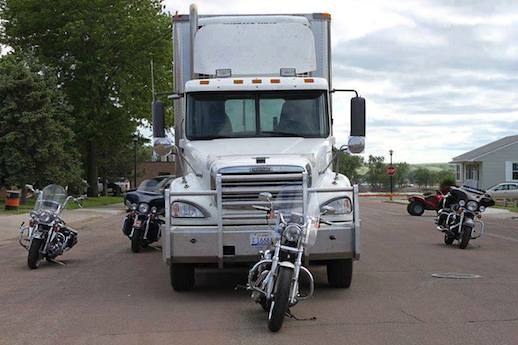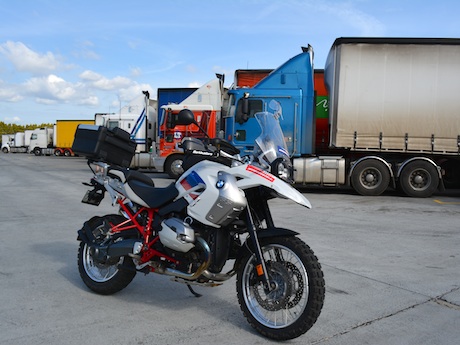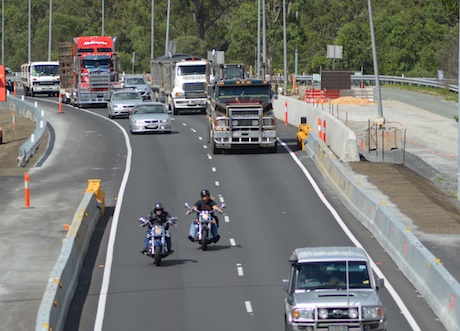Many motorcycle riders are unaware of the extent of dangerous blind spots around a truck or other large vehicle but new legislation hopes to make them safer for riders.
London has introduced legislation banning trucks (lorries) over 3.5 tonnes that do not have special extended mirrors that reduce blind spots and make the roads safer for vulnerable road users such as motorcyclists.
Drivers with a non-complaint vehicle face a £50 Fixed Penalty Notice and potential fine of £1000 in the Magistrates Court.
Similar legislation would be most welcome here in Australia.
RACQ safety officer and Suzuki Bandit fan Steve Spalding says blind spots around large vehicles are “a very risky situation for riders”.
“If there are ways to improve the types of mirrors fitted, or have better placement of existing ones, then we’d like to see heavy vehicle operators make those changes,” he says.
“Riders have to be aware of their vulnerability at all times but particularly when in congested traffic and around large and heavy vehicles because it can be difficult for truck drivers to cover all the blind spots.”
However, the truck mirror legislation would not have helped the London rider in this video which has gone viral. He was in front of the driver!
The Goldwing World Facebook page published the photograph below warning of the extent of these blind spots claiming that all the bikes in the photo are in the truck’s blind spots.
The photo is a timely reminder of the dangers of riding around trucks in traffic and of the responsibility riders must take to make themselves visible. But the photo both under-estimates and oversimplifies the issue.

Not all trucks, buses and other big vehicles are the same. Fixed vehicles such as vans and buses/coaches have different blind spots to B doubles or prime movers with trailers. There are also extra blind spots for trucks with hoods (eg Mack) rather than cab-over trucks (eg Hino) with flat fronts.
We spoke with several bus and truck drivers and they say they don’t have a lot of problems with riders, but agree that there is potential for riders to get lost in blind spots.
For fixed vehicles, the worst blind spot is close on the inside (left in RHD countries and right for LHD countries) of the vehicle. Most heavy vehicles have blind-spot mirrors, but fast-accelerating bikes can zoom into view so quickly on a slow-moving vehicle, the driver may not have had a chance to see them.
Prime movers also have the problem that when they turn, their mirrors, which are fixed to the prime mover, show only a view of the trailer on one side and a wide view on the other, creating a massive blind spot area.
For trucks like Mack with a big bonnet, almost everywhere from the mirrors forward is a blind spot, especially by the inside fender. Drivers say riders can slip into the gap in front of a truck without them seeing the bike, which could result in a rear-ender as they approach a red traffic light.
They also claim that when the lights turn green, a gap opens up in front of slow-moving trucks and riders tend to slip into that gap where they may not be seen.
Bus and truck drivers also warn about the aerodynamic effects of following and riding too close to their vehicles.
Vehicles such as buses and some trailers with carriages low to the ground tend to create a vacuum at highway speeds that can suck a light bike toward them and potentially under their wheels.
Other trailers can push riders away into oncoming traffic. Some trailers, such as those carrying vehicles, create so much turbulence it can send a light bike into a tank slapper.
The effect is worse if the rider follows too closely before overtaking as they cop a sudden blast as they draw up alongside.
Oakey truckie Brad Shannon advises: “If you can see our mirrors we should be able to see you. But I always look twice, anyway.”




